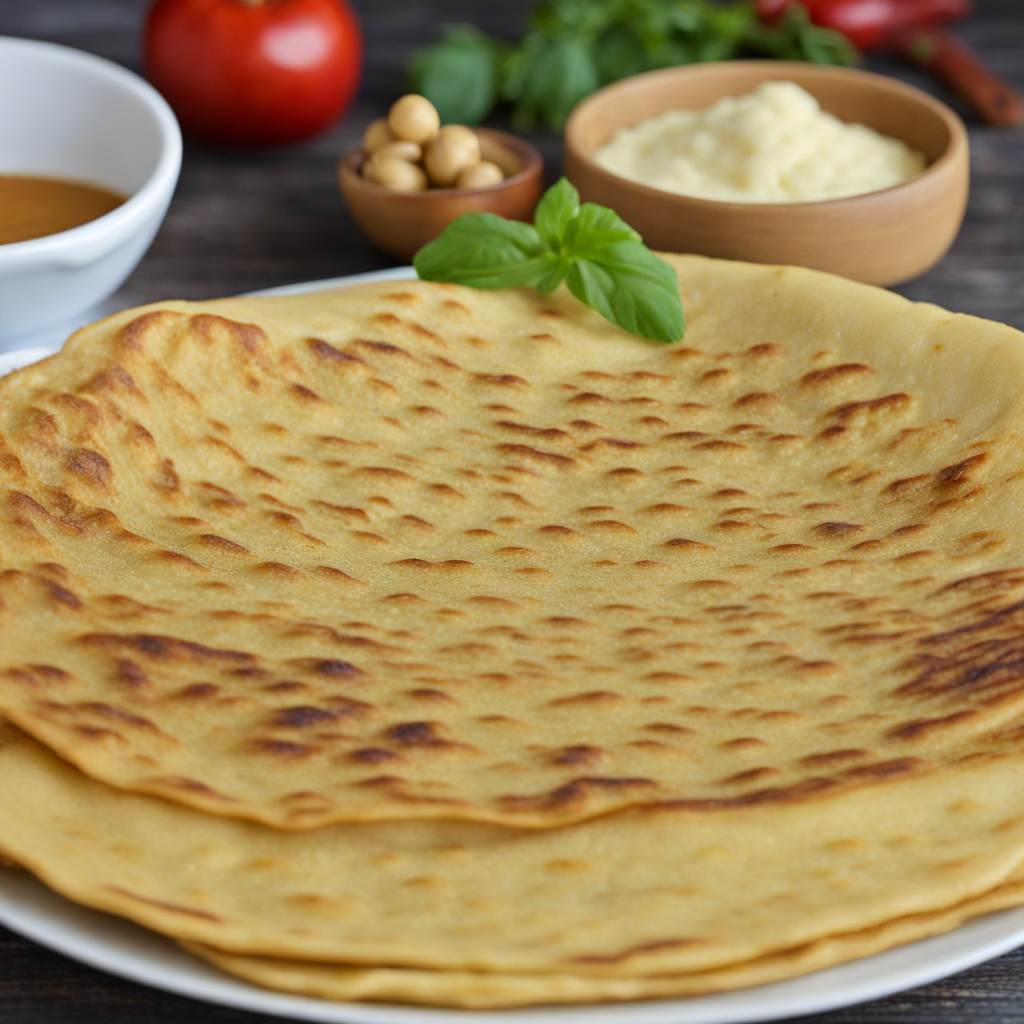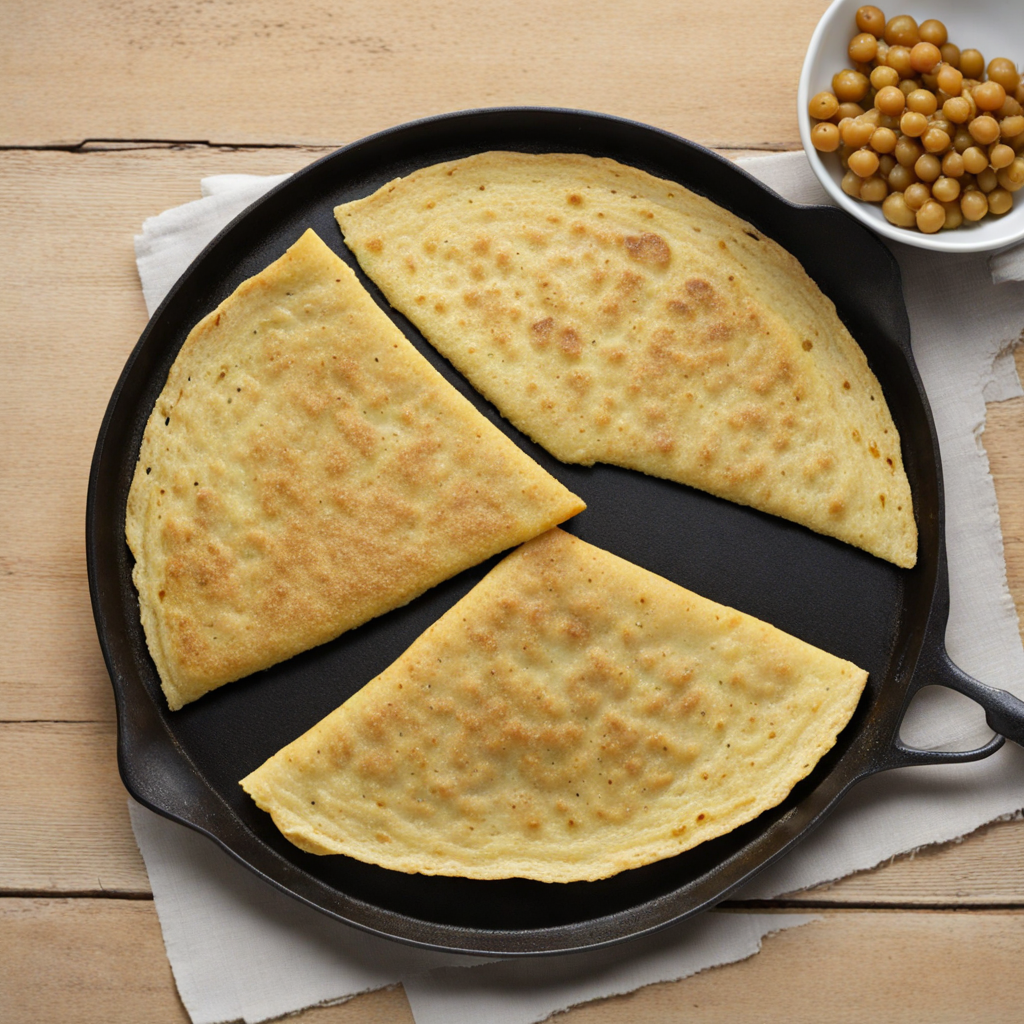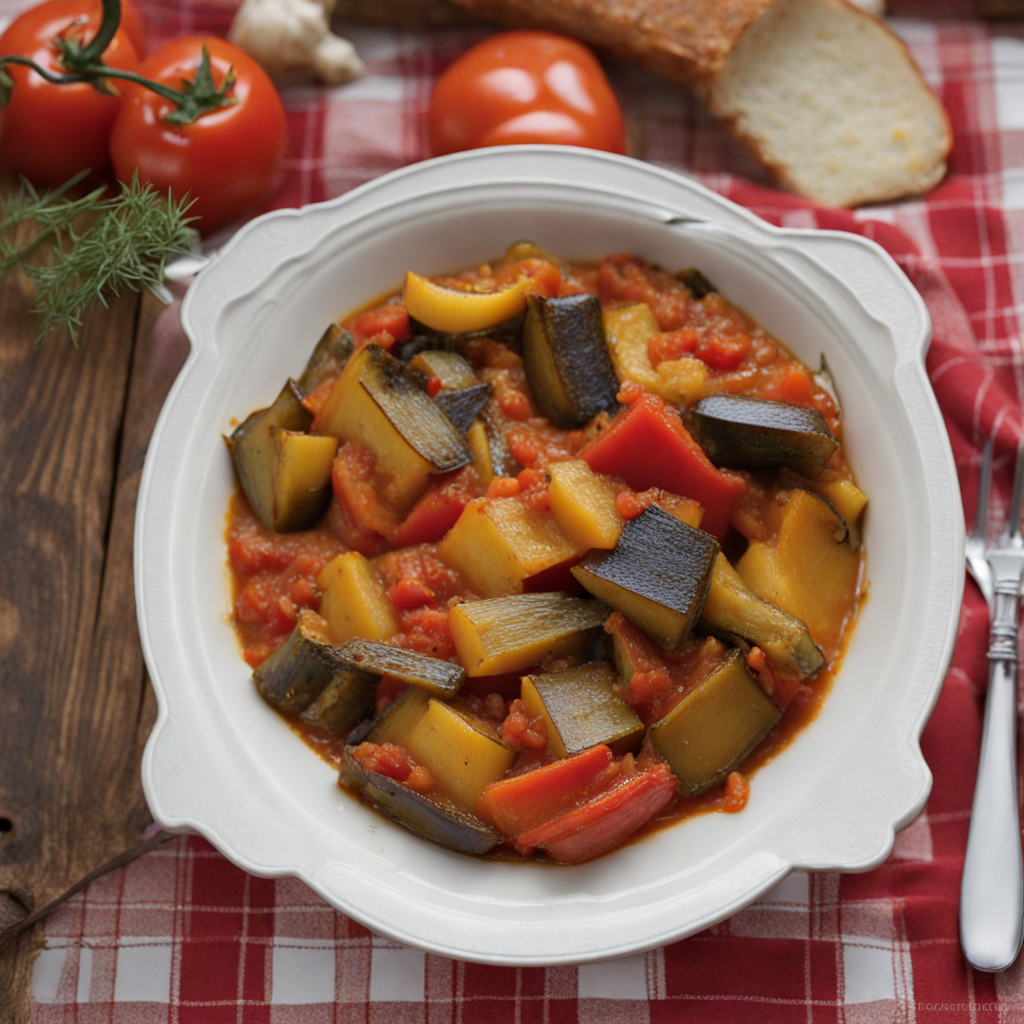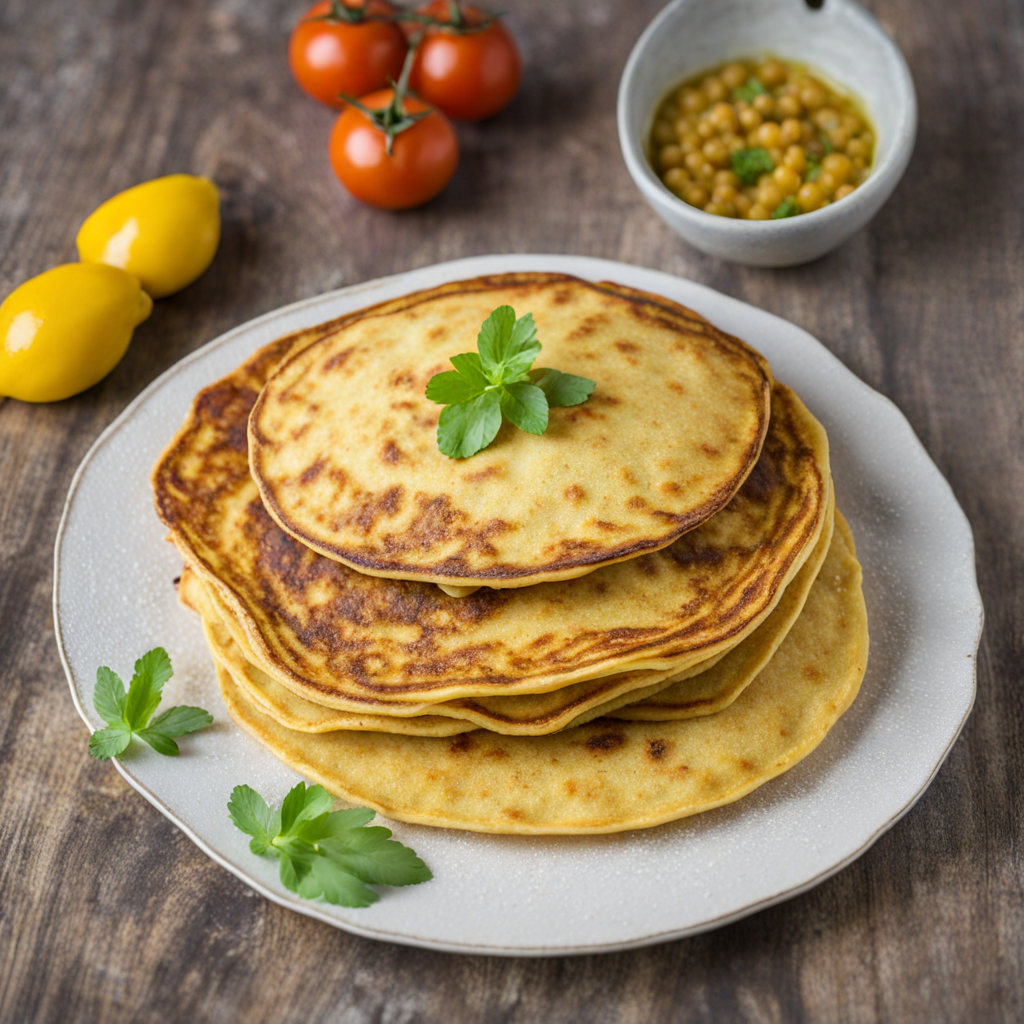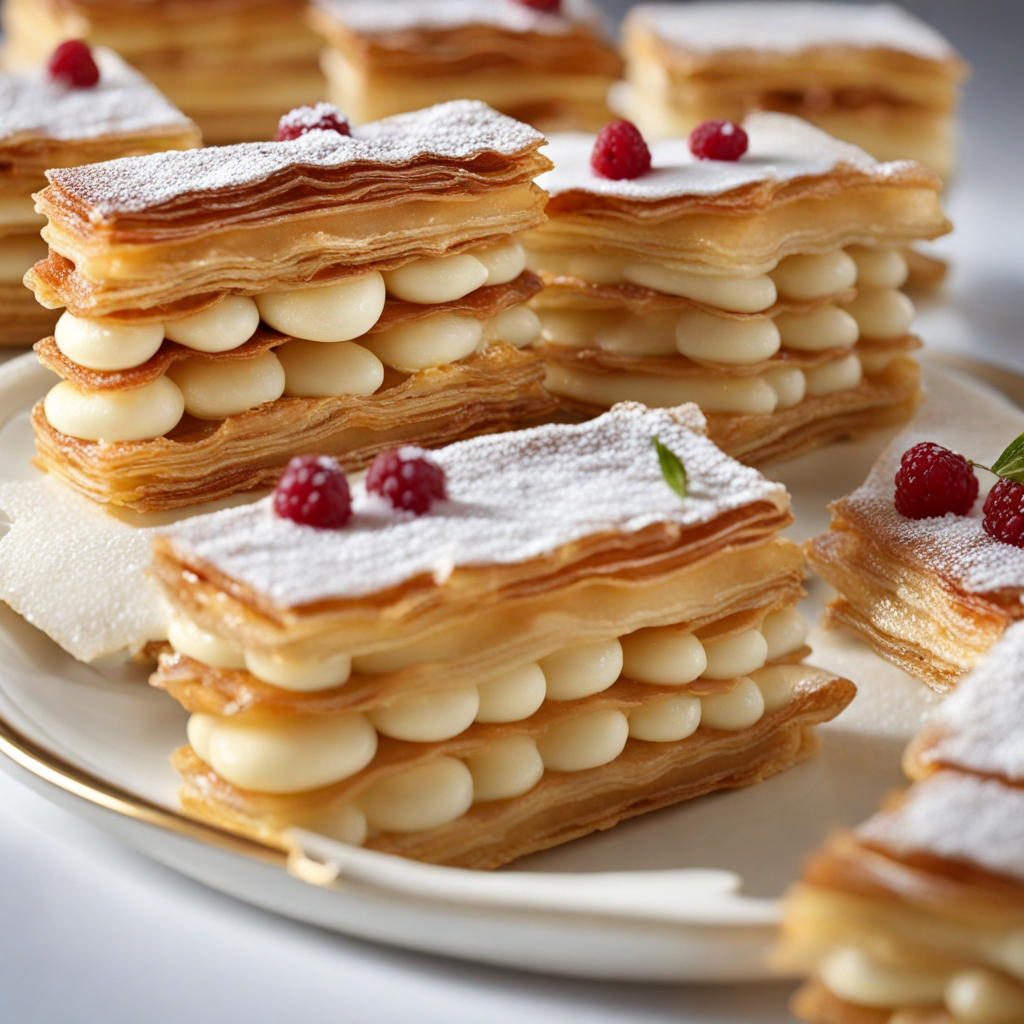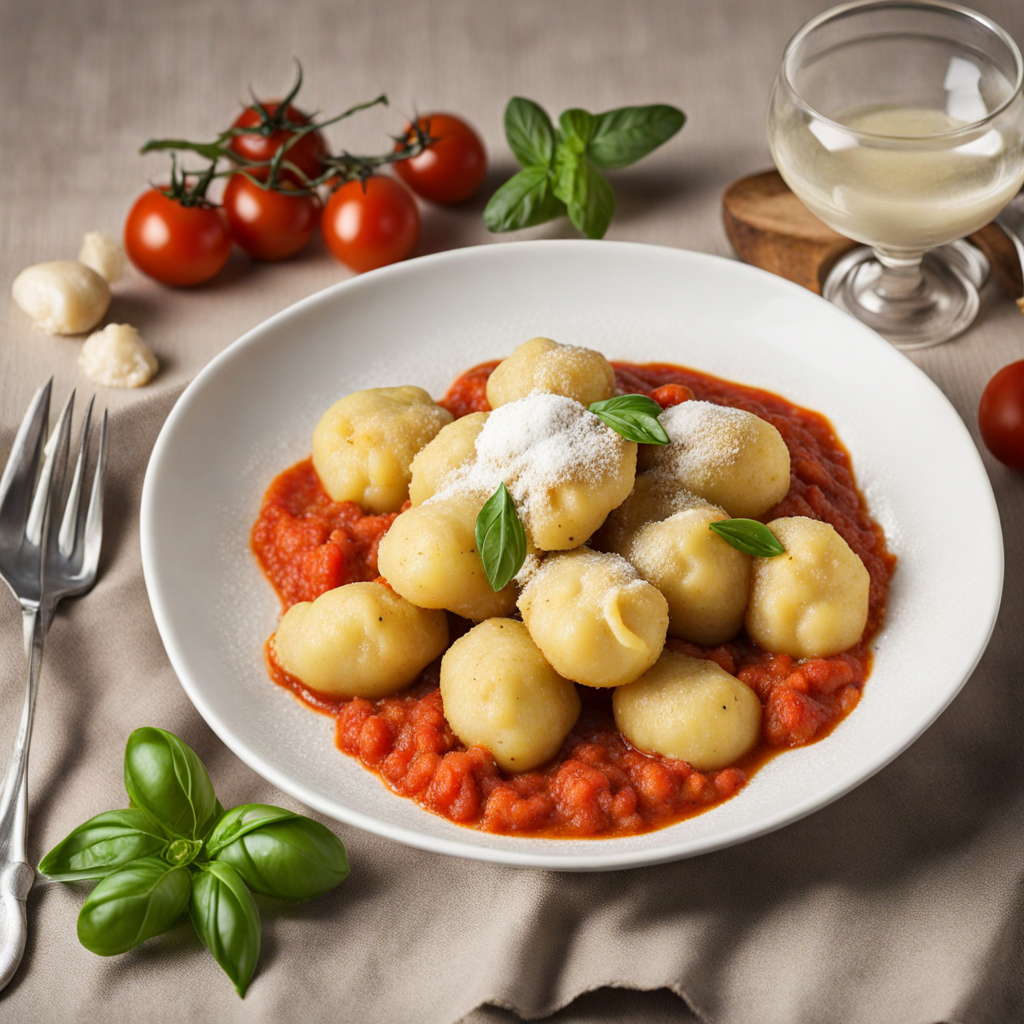Farinata
Farinata is a delightful dish that hails from the Mediterranean region, particularly gaining fame in the Italian coastal areas and the nearby city-state of Monaco. This savory pancake is primarily made from chickpea flour, water, olive oil, and salt, creating a simple yet flavorful foundation. The dough is spread out in a hot, shallow pan and baked until it achieves a golden, crispy exterior while maintaining a soft, almost creamy interior. Its rustic charm and straightforward ingredients make it a staple in local cuisine, cherished for its versatility and satisfying texture. As you take your first bite of Farinata, you will be greeted by a nutty flavor that beautifully complements its slight earthiness from the chickpeas. The dish is often enhanced with various toppings, such as rosemary, black pepper, or even a drizzle of high-quality olive oil, each adding their own unique twist to this traditional recipe. The aroma wafting from the oven as it cooks is irresistible, drawing you into a world of Mediterranean warmth and culinary heritage. Farinata can be enjoyed in numerous ways: as a hearty appetizer, a snack, or even a main course when paired with salads or vegetables. Its gluten-free nature makes it a popular choice for those with dietary restrictions, while its rich taste appeals to anyone seeking a new culinary experience. In Monaco, you might find it served in local bistros or enjoyed at street food stands, where its simple yet profound flavors continue to captivate both locals and visitors alike.
How It Became This Dish
Farinata: A Culinary Journey Through History and Culture in Monaco Farinata, a delightful chickpea flour pancake, is a dish that holds a special place in the culinary traditions of the Mediterranean, particularly in Monaco and the surrounding regions of Liguria in Italy. This simple yet flavorful dish has a rich history that reflects the cultural exchanges and agricultural practices of the area over centuries. Origins of Farinata The origins of farinata can be traced back to ancient times, with its roots deeply embedded in the peasant cuisine of Liguria and the broader Mediterranean basin. It is believed that farinata was first created by the people of Genoa, Italy, around the 13th century. The dish was born out of necessity, as it utilized inexpensive and readily available ingredients. Chickpeas, which were cultivated in the Mediterranean for millennia, provided a nutritious and hearty base for this dish. The name "farinata" itself is derived from "farina," the Italian word for flour. Traditionally, farinata is made by mixing chickpea flour with water, olive oil, and salt, resulting in a batter that is poured into a hot, round baking pan. The pan is often made of cast iron and placed in a wood-fired oven, which gives the farinata its characteristic crispy exterior and soft interior. Cultural Significance Farinata is more than just a dish; it is a cultural emblem of the Mediterranean way of life. In Monaco, as in many coastal towns, farinata has become a beloved staple, often enjoyed as a street food or a quick snack. It is commonly served in small wedges, often garnished with fresh herbs, black pepper, or even onions, and is typically enjoyed with a glass of local wine or a refreshing beverage. The dish embodies the spirit of communal dining, often served at family gatherings, festivals, and local markets. In Monaco, farinata can be found in various eateries, reflecting the region's hospitality and the importance of sharing food with loved ones. It is not just a meal; it is an experience that brings people together, fostering a sense of community and connection. Evolution Over Time As the centuries progressed, farinata evolved along with the culinary traditions of the Mediterranean. By the 19th century, it had spread beyond Genoa and became popular in various parts of Italy, particularly in coastal regions. Each area developed its own variations, incorporating local ingredients and culinary techniques. In the French Riviera, where Monaco is located, the influence of French cuisine began to shape the way farinata was prepared and served. Despite its humble beginnings, farinata has gained recognition in more upscale dining contexts, showcasing the versatility of chickpea flour. Chefs began experimenting with different flavors and toppings, creating gourmet versions that drew on local produce and culinary innovations. In Monaco, where fine dining is a hallmark of the culinary landscape, farinata has found its place on restaurant menus, often paired with seasonal vegetables or seafood to highlight the region's rich bounty. The Modern-Day Farinata Experience Today, farinata is a beloved dish not only in Monaco but also in many parts of the Mediterranean, including France, Spain, and North Africa. Its gluten-free nature makes it appealing to a wide range of dietary preferences, and its simplicity allows for endless variations. Home cooks and professional chefs alike have embraced farinata, incorporating it into contemporary cuisine while paying homage to its historical roots. In Monaco, the dish is often featured at local festivals and food markets, where vendors prepare it fresh on-site, filling the air with the enticing aroma of chickpeas and olive oil. The annual "Fête de la Gastronomie" showcases not only the culinary heritage of the region but also highlights the importance of sustainability and local sourcing. Many chefs use organic chickpea flour and local olive oil, emphasizing the connection between the dish and the land it comes from. Furthermore, farinata has become a symbol of culinary resilience. In a rapidly changing world where food trends can come and go, farinata remains a steadfast reminder of the importance of tradition, simplicity, and the communal experience of sharing a meal. It serves as a bridge between past and present, connecting generations through the act of cooking and eating. Conclusion Farinata is more than just a chickpea pancake; it is a culinary artifact that tells the story of Monaco's rich history, cultural significance, and evolving gastronomy. From its humble origins in the 13th century to its contemporary iterations, farinata embodies the spirit of the Mediterranean: a celebration of community, tradition, and the joy of sharing food. Whether enjoyed at a bustling market, a family gathering, or a fine dining establishment, farinata continues to delight palates and warm hearts, ensuring that its legacy will endure for generations to come.
You may like
Discover local flavors from Monaco


